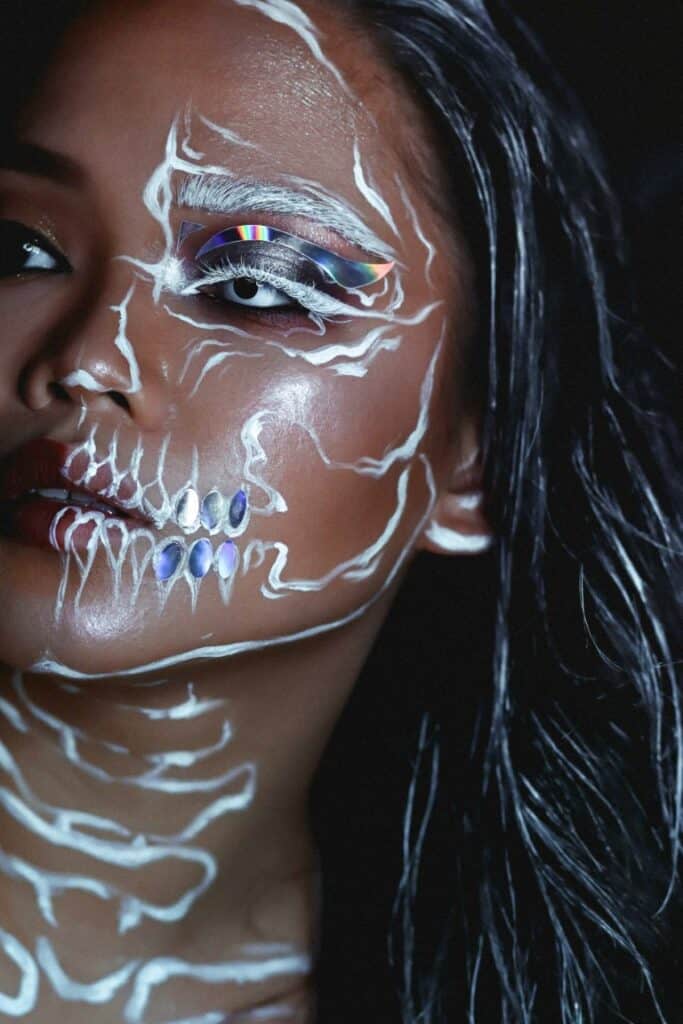Lately there has been a trend going around… a trend about red ink only tattoos! With this new trend, there have been a few experiences made known to the public of allergic reactions from red ink.
Oh, no! Now I can never get a red tattoo and I have to go get lasered!!!!
Relax, it’s not THAT deep and there’s no need to panic. Together, we’ll go over the possible risks of red tattoo ink and what you can do to prevent them.
What are red tattoos and why would anyone want one?
Red ink tattoos are basically just tattoos inked only with red ink.
It can be any design you would like! Whatever you’d get tattooed with black ink, you can get in red! However, you’ve probably heard some red flags (pun intended) when it comes to getting a red tattoo. We’re going to go over them in a few.
Possible symbolism behind the reason of fully red inkings
Let’s think about the color red for example. The first, or at least one of the first, things that’ll come to mind is probably something having to do with passion or sex.
In a lot of different cultures, the color red is associated with sexuality, hence all of those dainty red lingerie pieces for the ladies.
Furthermore, the color has a certain energy towards it. It draws attention like no other color! Now I understand why my mom told me to wear a red dress with red lipstick if I want to seduce someone…
Think about it though, sexy ladies in movies are often dressed in red or are at last wearing red lipstick. Moving onto real life for a second, think about it! Have you never seen someone wearing red and you’ve instantly found them more attractive?
Other
Anyways, despite this possible significance for the color, there’s others. In Chinsese and Japanese culture, red is associated with joy and good luck! This is why you’ll see red decorations all over the place during the period of New Year.
If you want a red tattoo and don’t resonate with any of these, remember that art is very subjective. These are just the most common ones, so, don’t let a common meaning stop you! You can make your own thing out of it.
Some people also get these just for the aesthetic of it all. It’s simply – pretty and delicate!
Red ink on darker skin tones
Before we move onto the potential risks, we’d like to touch on a specific topic: the common misconception that red tattoos aren’t ‘suitable’ or wouldn’t look good on people with darker skin shades.
This is WRONG! To whomever might be reading this, please get this out of your head.
While it is true that there would be higher contrast on lighter skin, it doesn’t mean that red tattoos couldn’t be vibrant or beautiful on dark skin.
It all comes to the tattoo artist and in our opinion, this is one way you can tell if your tattoo artist is truly skilled. The person you go to should know or at least be educated on how to apply color depending on a client’s pigment.
Sadly, in our industry tattoo artists like that have been limited in numbers. There has been some change in the recent years, though. We can only hope people keep educating each other and themselves!
This is however the reason why there are certain stereotypes/prejudices when it comes to tattooing darker skin. Most of them, stemming from outdated rasict beliefs.
Dark skin is not any tougher than light skin and it does not scar any more or less than light skin! The reason some might believe otherwise is, because some uneducated tattoo artists tend to be rougher with dark skin. When a tattoo artist is uneducated on this topic, they might find necessary to go over a certain spot multiple times, causing excessive damage to the skin… Which then only makes the stereotypes worse.
Just to be clear, we’re not blaming anybody. It would just be nice if more people would educate themselves on certain topics.
Potential oopsie-daisies
Now we’re going to go over the potential risks, mainly, the allergic reaction. An allergic reaction can include:
itchiness
bumps
rashes
slow healing
swelling
tattoo infections
…
Sadly, even if we try to be cautious when going to get a red tattoo, we still cannot be 100% sure if we’ll develop reactions or not. This is because an allergic reaction can occur right then and there, or it can come years later after it’s healed.
Keep in mind that we’re highlighting the worst cases out there. It’s not a pandemic, but it is a concern.
There are however, some things we can to to prevent a reaction as much as possible. First, let’s take a look as to why these are happening.
Triggers for an allergic reaction
As we all know, red pigments are a pain in the butt to get rid of in general. Red dye specifically is irritable to lots of us, tattoos aside. Think of hairdye, makeup, food, etc… Whatever it is, it has great staying power and it stains whatever it touches.
This makes it perfect for tattoo inks! I mean, it’s the staying power we crave when getting tattoos, right? Who would want to sit in agony for hours at a time, for something temporary.
Our worst enemy: the pigment
The issues, however, lie within the red pigment of the dye. The same pigment that also ensures its staying power can cause you reactions and you don’t even have to be that sensitive.
The most common red dye: Red dye 40. Funnily enough, red dye 40 is the most commonly used food dye. Luckily the FDA does approve those dyes, for food at least. Tattoo ink is mainly used for tattoos and permanent makeup. Since these are cosmetic purposes, the inks stay unregulated.
If the ink your artist uses has been made inorganically, chances are it’ll contain certain metals. One of which is nickel. So, if your skin gets irritated from cheap jewelry – ask if there’s a possibility for the artist to use another brand.
Another one is cadmium. This is the key ingredient to making bright red shades and is the one that causes the most problems.
However, a medical study from 2018 reported that it is not the ink itself that’s causing the reactions. It’s when the primary components of the ink start their degradation process, that an allergen is generated.
Azo pigments
The medical study further went on to give us the example of Azo pigments. Those pigments are accountable for most of the yellow to red range of pigments. They’re probably the most mass-produced pigments/dyes and they are being used in different industries: such as textile, paper, art paint, cosmetics, etc…
Since there isn’t a dye shop for producing tattoo pigments specifically, the same pigments for paint and textiles are being used in tattoo inks. An Azo pigment is insoluble in virtually all media and as we all know, so is tattoo ink. It all makes sense!
When intact, they’re harmless. Once exposed to UV-radiation (sun) for longer periods of time, however, the pigments become chemically unstable and start degrading and diffusing. As a result our chances of getting an allergic reaction increase.
If this keeps happening for years at a time, they can degrade into a potential carcinogen (nitrogen-based compound), which can cause cancer in living tissue.
Organic ink isn’t all that safe either, so to see.
Don't freak out!
Things you can do to prevent this happening to you
Before you start freaking out, you should remember that we’re still talking about unregulated red inks. There are things you can do to prevent this.
If you have a skin condition or have had skin reactions, to whatever, in the past – let your artist know! This way, they’ll know what to consider when you go in the tattoo parlor to get your ink.
This way, they’ll know what to keep in mind when you go in the tattoo parlor to get your ink.
Tattoo artists have seen tattooed skin before, they’ve seen adverse reactions, they’ve seen fully healed pieces, etc… They’ll know what to do. Just doublecheck to be sure and if your artist isn’t elaborating with you, maybe keep looking for an artist.
If you already have a red ink tattoo, just cover it from the sun when you go out!
In general, the chances you’ll get skin cancer from just sunbathing, are way higher than getting it from a tattoo. So, relax and put that factor 50 sunscreen on!
For those that are wanting to get a red ink tattoo, do your research!
Find out what brand your tattoo artist is using and research it. Ask if there’s a possibility to use a safer brand and find out what the safer brands are.
In case your tattoo artist refuses, find an artist that’s already using the brand you’d like.
When getting a new tattoo, just follow the aftercare instructions. It’s not only the UV-radiation that can cause the pigments to be chemically unstable, but harmful bacteria aswell.
So yes, there are some restrictions and less fun things you have to follow when healing fresh tattoos, but it’s for a reason.
If you’re from Europe: you’re in luck!
The Registration, Evaluation, Authorisation and Restriction of Chemicals (REACH) regulation took care of this potential risk for us.
If you remember the buzz about ”Europe banning color inks” or ”Color tattoos in Europe are done” back in 2020, that’s what it was about. The EU member states and commission basically gave the tattoo industry stricter rules when it came to the usage of certain inks made with hazardous components.
We hope you guys found this informative and that it helped you, even a bit. Do you have red tattoos? If not, thinking of getting one? Or maybe you want to stick to what you know and will go for blackwork or multicolored tattoo?
Whatever it is you were here for, let us know down below!



